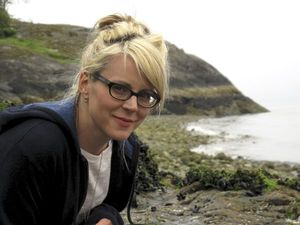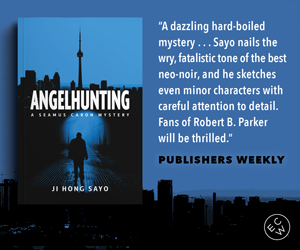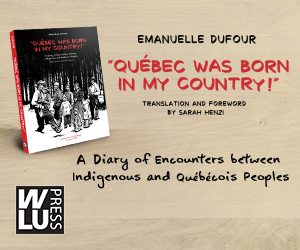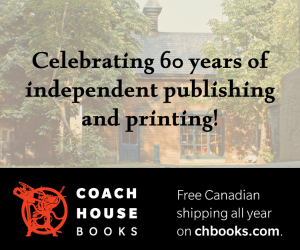"How Do We Transform?" Susannah M. Smith on Her Unique, Imaginative Novel The Fairy Tale Museum
Susannah M. Smith's The Fairy Tale Museum (Invisible Publishing) is populated with a cyborg cyclops, fortune tellers and vampires, lovers with the heads of birds, and countless other characters who live up to the fanciful otherworldliness of Smith's eye-catching title. Earning praise from Stuart Ross and Derek McCormack, authors also know for their wild creativity and embracing of the odd and lovingly grotesque, The Fairy Tale Museum is a truly creative act, and one with heart and meticulous craft on display as well.
We're thrilled to welcome Susannah to Open Book today as part of our Lucky Seven series, where we ask authors seven questions to unlock their newest book, their writing process, and their inspirations.
Susannah tells us about capturing the overflow of her previous novel in The Fairy Tale Museum, what the 13 years that went into this project looked like and how the novel changed over that time, and the Proustian trick she uses to get back on track when writing roadblocks pop up.
Open Book:
Tell us about your new book and how it came to be.
Susannah M. Smith:
The Fairy Tale Museum is a work of fiction that is structured as an alchemical museum comprised of galleries that a reader can "walk through" sequentially or visit in a random order. The book began as a way to capture some of the characters that overflowed from The Holy Circus (a group of performers with special metaphysical abilities) in my first novel, How the Blessed Live.
OB:
Is there a question that is central to your book, thematically? And if so, did you know the question when you started writing or did it emerge from the writing process?
SMS:
One of the strongest themes in The Fairy Tale Museum is the idea of transformation. As the individual characters assembled with their unique situations, it became clear as I continued to write that many of them shared this theme of transformation—being on the brink of or in the midst of or avoiding change in some way. Magic, the creative process and death are all natural extensions of this theme and also figure prominently in the book. So, perhaps one of the central themes or questions of the book is how do we transform? How do we create the lives we dream of living? What does it really mean to be creative?
OB:
Did this project change significantly from when you first started working on it to the final version? How long did the project take from start to finish?
SMS:
The earliest notes I have towards The Fairy Tale Museum are dated 2005. When I first started jotting ideas down, I was interested in capturing a playful or fanciful tone and was calling the manuscript Fancy. Then, as the carnival theme became more pronounced, the title changed to Practical Carnival Projects. At some point, when the central organizing structure of the museum prevailed, the title evolved into The Fairy Tale Museum.
Thirteen years from first notes to publication date seems like a long time; however, during those years, I moved across the country, wrote two unpublished novels and completed two Masters degrees. The Fairy Tale Museum was such a pleasure to write and I probably could have tinkered with it in indefinitely. Ultimately, I needed to let it go and make room for other creative projects.
Your CanLit News
Subscribe to Open Book’s newsletter to get local book events, literary content, writing tips, and more in your inbox
OB:
What do you need in order to write – in terms of space, food, rituals, writing instruments?
SMS:
I have a writing studio at home where I can close the door and take space to focus. On a writing day, my preferred rhythm is to be in my studio from the morning into the early afternoon. Once mid-afternoon hits, my rhythm changes and I need to move my body. This usually involves getting outside and going for a walk.
I'm not a coffee drinker but I do love chocolate. Homemade organic hot cocoa or almost any form of dark chocolate are my favourite treats while writing.
When I'm out and about, I always carry a notebook so that I can capture ideas as they arise. I prefer black ink and blank pages; I don't like to write between lines and often make sketches as part of my creative process. I do most of my initial work in notebooks and only transfer it to my laptop when I'm ready to assemble a first draft. This period of research and idea collection is a magical time frame for me when anything is possible and I can follow the trail of inspiration with abandon before the narrative gets tied to a specific structure.
OB:
What do you do if you're feeling discouraged during the writing process? Do you have a method of coping with the difficult points in your projects?
SMS:
If I feel I'm getting bogged down or stalled at some point during a project, it helps me to change gears and do something like read, exercise, watch a film, or visit an art gallery.
Sometimes I find the editing process challenging. When that happens, I like to break the work down into bite-sized increments that feel more manageable than tackling a huge task all at once.
One other trick, which is sort of Proustian, is to prop myself up on a bed or couch with my notebook or computer and a selection of books beside me. Inevitably, since I'm "just relaxing," the writing begins to flow again and I get back on track.
OB:
What defines a great book, in your opinion? Tell us about one or two books you consider to be truly great books.
SMS:
In my opinion, a great book is one that challenges me to reach just beyond where I am as a reader. It is one that is slightly elusive and one that I am compelled to read more than once to parse its mysteries. Ultimately, I think a great book should inspire its readers through emotional and imaginative expansion.
For me, The Poetics of Space by Gaston Bachelard is a great book because takes me to the edge of my understanding of language, imagery and culture with moments of illumination scattered throughout. I would say the same of almost any book by Anne Carson, and also of Walter Benjamin's Archive, which is a treasure trove of text, images, and facsimiles that paves an open road into Benjamin's life and work.
OB:
What are you working on now?
SMS:
I have started to take notes towards a possible sequel to The Fairy Tale Museum that would give more insight into the narrator's personal story. I'm also in the inspiration and collection phases of a visual book that would communicate its ideas chiefly through artwork based on a central theme. Finally, I’m considering reworking an earlier, unpublished novel into a modern ghost story.
_______________________________________
Susannah M. Smith is the author of the novel How the Blessed Live (Coach House Books). Her short fiction, non-fiction, artwork, and poetry have appeared in various publications. She lives in Vancouver.




